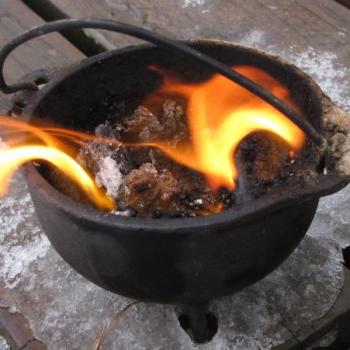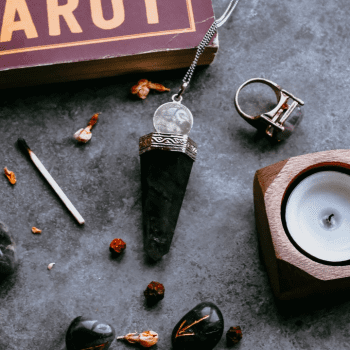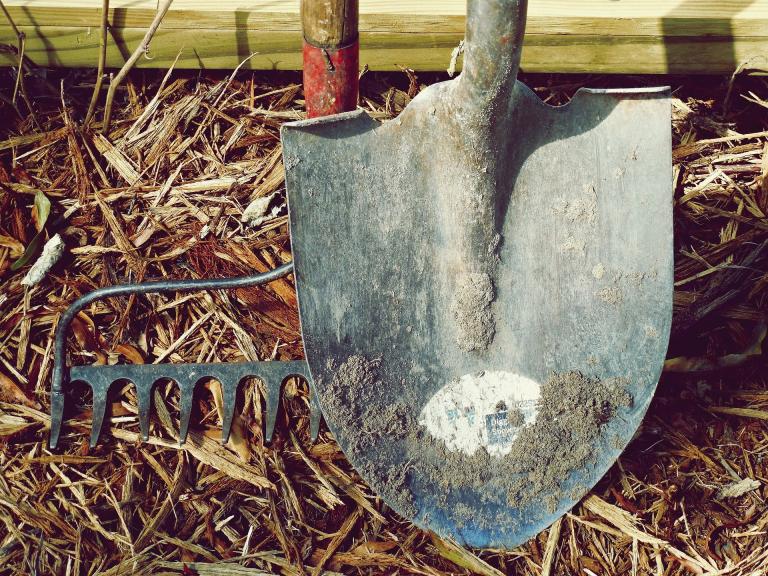Thanksgiving is a holiday fraught with complications.
When I was a kid, I was indoctrinated with happy Pilgrims and Indians sharing corn and pie, just like most of the rest of the USA. Mostly I dreaded having to dress up, looked forward to seeing my cousins when they came, and generally liked parades and food.
People often think, “How can you go wrong with parades and food?”
Many years later, I know a lot more about the reality of colonialization in America and the genocide of many native tribes. As a nation, we ongoingly, through the centuries, have continued devastating native tribes using many varied techniques including stealing children, killing people, making treaties and then promptly breaking them, forcing people to learn English, forcing people to be part of a consumer economy, killing off all food sources, ruining farmland with hydroelectric and oil projects, and forcing people to subsist in poverty without the resources of the land to sustain themselves.
This is not a good model for teaching kindergarteners the value of sharing.
If you want to know more I highly recommend Our History is the Future, an excellent book about the history of the Native American struggle for freedom. Here’s what I wrote about it in my review over on Goodreads:
“A profound and powerful narrative of the colonial action against the Indigenous people here in what is now the United States. It moved me. It explained visions that I have had, as a priestess and pagan. The crucial reality of land and water as literal life. It is something I have felt time and time again and that the spirits have practically shouted into my head. I have been pushed off land I have farmed many times now. The reality of corporate and capitalistic control as tied to access to the other species in this world and to the world itself…. So obvious, and yet never so clearly stated and laid out for me as in this book. It’s due back today, and I can’t renew it, someone else has it on hold from the library. I will be purchasing it and will have to copy down the page numbers and notes from the post-its carefully placed to help me remember specific passages.
“How can the settler society, which possesses no fundamental ethical relationship to the land or to its original people, imagine a future premised on justice?”
That is the question that I have been working on for 20 years now. I’ve learned so much and have so much left to learn. Solidarity in the Work.”
The Thought Process Behind the Word and Actions
So what is a person to do when trying to meld family tradition with painful reality? Some will simply set that knowledge aside and dig into their mashed potatoes and stuffing. I know some who have chosen not to celebrate Thanksgiving at all. For my family, we have decided to ritualize our thanksgiving in an effort to work with the complicated emotions that come out of it.
We will be working with the transition from Grief to Joy.
Specifically, we will be working with the grief that comes from the knowledge that our gratitude, our homes, and our lives on this land are predicated on the death of indigenous cultures and people.
In order to do so, we will be integrating some simple ritual components into our Thanksgiving dinner as well as crafting a land acknowledgment statement that is focused on our bioregion and local tribal history.
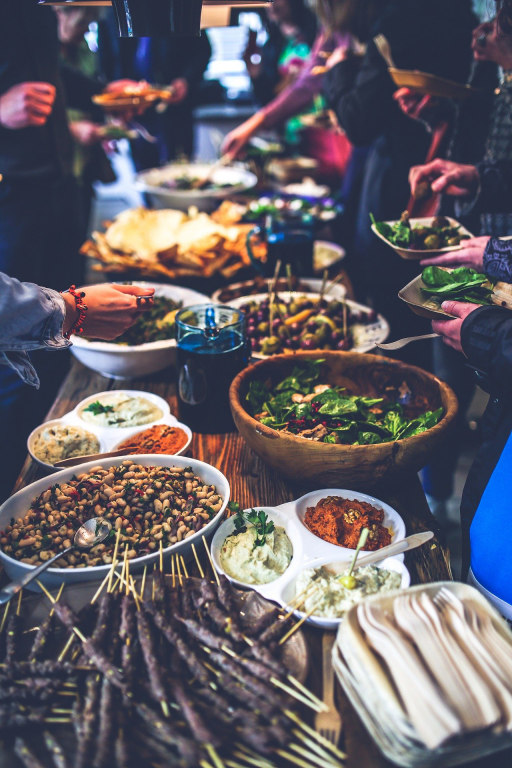
A Simple Thanksgiving Ritual
You will need:
- Something to purify with: incense, saltwater, or even a good scrub with soap and hot water are all good choices.
- Water collected from sacred sources, snowmelt, rainwater, or river water are all good sources. I would encourage you to gather your sacred water from your bioregion.
- A bowl.
- A list of the Native tribes that live and lived on the land near you. Here’s a resource to help you with that.
- Friends and loved ones
- Food that represents your own food traditions, as well as the food traditions of this land.
Beforehand:
Explain to your guests that you are trying to incorporate ritual elements into your thanksgiving dinner. Talk them through your plans, and ask if they have any questions about what you’re going to do. If you have family who are not comfortable partaking of the ritual aspects of the meal, ask them to respectfully wait until you are finished, either at the table, or to the side. It can help to explain that this is similar to a Christian prayer in that it is a way to show gratitude for creation.
Before Dinner:
Set up a purification station somewhere in your home. Both the entryway and the bathroom are good choices for this space. In my home, we will be creating an altar near the front door with homemade incense and mugwort sticks, saltwater, a towel, and a lighter. If people are not familiar with purification, here’s a simple explanation that might help. Ask that people take some time to purify and get into a sacred mindset. Not only does this give people something to do, it also allows each person to quietly reflect on what is to come.
Once the Food is Ready:
Have all the guests gather around, either at the table or wherever seems appropriate. Have your sacred waters and your bowl with you. Explain how you gathered your waters, (and if there isn’t much feel free to mix it down with a little tap water, which is also sacred) Pour the water into the bowl, and say:
This is the water of all life, the blood of the land beneath us, and the tears of the sky above us. Let this water be the earth’s witness to our sorrow and joy, our grief and gratitude.
You can set the bowl on or near the table where everyone is eating. You’ll be picking it back up in a moment.
This is when you read your Land Acknowledgment. Yours will need to be personalized to your region and history. Here’s mine:
On this day of gathering, first let us honor and remember those people who came first in this place.Here in Michigan, we honor the Odawa Tribe, the Chippewa Tribe and the Potawatomi Tribe,known as the People of the Three Fires. We also honor the Huron Tribe and the Wyandot Tribe who have lived on this land for generations.
Having honored those who lived on this land for centuries before colonization,let us give thanks to them for their stewardship then and the ongoing battles that are still being fought surrounding women’s rights, racism, oil pipelines, land, and water usage and rights.I ask that in this space of gratitude that each of us reflect on how we might come into right relationship with this land we live on and all the people who have lived and will live upon it.
Please pass this bowl of sacred water and as you hold it, feel your connection to this land. Allow yourself to imagine how it might have felt to be pushed out, to have your relatives killed, to have your children stolen, to have your way of life erased. This is a difficult feeling. It is okay to struggle with it. Allow the feeling to be part of you and part of the water, then pass the bowl to the next person in silence.
Here we stand, gathered in a home of our own, with food to eat and warmth around us. These walls, this warmth, this food, it is made, it is grown, it is pulled from the land. Our lives stand on the lives of others. Our history is linked with the history of those who have lived on this land for generations. May we remember our history so that we may walk in gratitude and take action to create balance in our lives. May the spirits of land and sky bless us. May the waters that surround us bless this shared space and may we all be blessed by joy and right action in our lives. So be it.
Food and Gratitude:
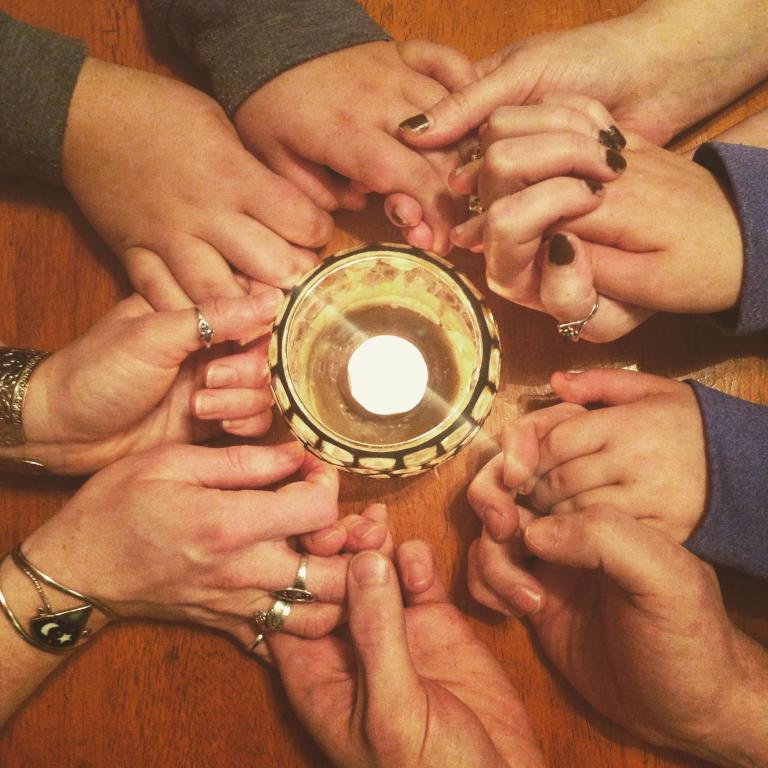
After the Meal:
So now I want you to pour the waters out on the land. This means you may need to put a coat on, and maybe some boots. I’m going to ask you to encourage your guests to do the same, but I’m counting on you to do this even if no one else wants to. It’s important. The spirits told me it’s important. Yes, this will be awkward. It will be more like Fargo than Lord of the Rings if it’s cold where you live. That’s okay. Magic and transformation aren’t always pretty and graceful no matter what your Instagram feed tells you.
So take your bowl, and trundle outside. Those waters heard everything you said. They were sacred long before you spoke fancy words over them. They’ll be sacred long after you’re dead. That’s a good thing. Those waters are how you commune and communicate with the earth. They felt everything you and your guests felt, they heard your gratitude, your sorrow, your shame, your fear, and your joy. You can say more fancy words if you want. Pour the water onto the soil if you can. Or if you live where there’s no soil, the concrete is okay too. Thank the earth for listening. Ask for her guidance.
Take a moment to exist in the liminal strangeness of doing something different and being in the cold outside, while warmth and more pie are waiting for you. Let your heart be filled with joy and grief all at once, mingling together. So often in modern life, we wonder if there is any meaning. That tangle of gratitude and sorrow, the history of our lives, that is our meaning, writ upon our souls. Those feelings we hide from with food and jokes are our guide. It’s easy to numb ourselves to meaning and pretend there is none when meaning has such sadness in it. If we allow ourselves the vulnerability of taking even a few minutes of shared time to process and stand in grief we have a chance of taking a step out of that grief into action, which is where we craft meaning into power.
Go back inside and enjoy your second piece of pie. Consider what you might be able to do, personally, to help create a world where thanksgiving isn’t tainted by ongoing poverty and subjugation of indigenous people. Learn more about those tribes you learned the names of. Are there local pow wows you could attend? Is there someplace you could donate some time or money to? I’m not going to give resources, because the best way to do that kind of work is on a very local level, in your town, not mine. Maybe you could research some issues and learn more, or maybe you could go to a local event? All that is up to you, and what lives in your heart.
May the gods and spirit guide you and bless you.
So be it.
If you like my work, and would like to support my long form posts here on Patheos, I encourage you to consider stopping by my Patreon. Thank you.








